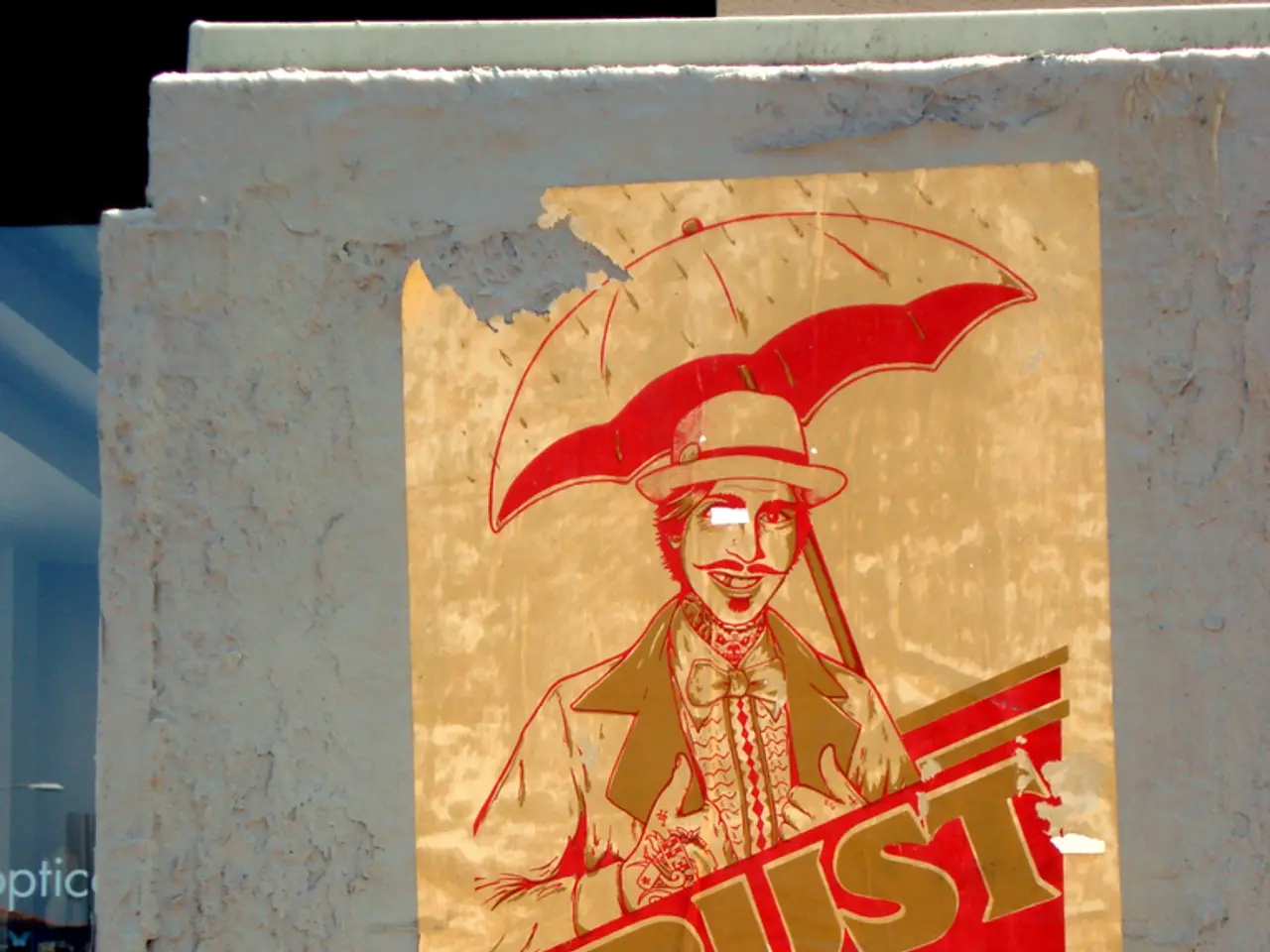Examination of Poster House's Display: 'Fallout: Atoms for War and Peace'
In the heart of Manhattan, Poster House—the first museum in the United States dedicated exclusively to the art and history of posters—is currently hosting an intriguing exhibition titled Fallout: Atoms for War & Peace. This thought-provoking display delves into the arguments surrounding nuclear technology that dominated the 20th century.
The exhibition showcases over 11,000 posters from around the globe, spanning from the late 19th century to the present day. It illustrates the evolution of nuclear power's portrayal in art and propaganda, transitioning from optimistic promotion to critical protest.
During the Atoms for Peace era in the 1950s, posters painted a picture of nuclear technology as a symbol of progress and peaceful energy use. This is exemplified by the iconic General Dynamics series, which celebrated nuclear power for its civilian benefits. However, the exhibition also highlights the growing public concern and anti-nuclear sentiment, reflected in over 60 posters that depict the dangers of nuclear weapons, radioactive fallout, and calls for disarmament.
The trajectory of visual culture mirrors the shift from government campaigns promoting atomic energy’s benefits—emphasizing its potential to fuel industry and improve lives—to grassroots and activist art that exposes the existential threats of nuclear warfare and radioactive contamination. The exhibition’s collection captures this contrasting imagery, from bold, clean designs that emphasize power and innovation to stark warnings that critique nuclear proliferation, radioactive hazards, and the risks to humanity and the environment.
The Fallout exhibition invites viewers to think critically about how governments, corporations, and citizens have shaped—and continue to shape—the narrative around nuclear energy. It presents many faces to the argument, including ones of destruction and innovation, fear and hope, control and chaos.
The exhibition also sheds light on significant historical events such as the bombings of Hiroshima and Nagasaki in 1945, which marked the beginning of the atomic age. The Manhattan Project, a top-secret U.S. research and development program, created the world's first nuclear weapons in the 1940s. Post-war years saw global powers racing to develop their own nuclear arsenals, igniting the Cold War's nuclear arms race.
During this period, corporations like General Dynamics played a significant role in the development and expansion of nuclear technology, both for military and civilian applications. President Dwight D. Eisenhower's "Atoms for Peace" initiative, launched in the 1950s, aimed to rebrand nuclear power as a tool for economic success and a symbol of modern progress.
However, the exhibition also features materials from grassroots movements that emerged in response to the dangers associated with atomic energy. Many of these anti-nuclear posters depict images of mushroom clouds, skeletal figures, and radiation warnings, reflecting growing public anxiety surrounding nuclear accidents, waste disposal, and the threat of nuclear war.
In summary, the Fallout exhibition makes the evolution of nuclear power's portrayal visually and historically tangible by juxtaposing diverse poster styles and messages, providing a comprehensive look at the arguments surrounding nuclear power throughout the 20th century. This exhibition is a must-see for anyone interested in understanding the complex history of nuclear technology and its impact on society.
- The evolution of nuclear power's portrayal in art and propaganda, as depicted in the Fallout exhibition, reveals a shift from multimedia representations of nuclear technology as a symbol of cultural progress and optimistic promotion in the 1950s, to critical protest and visual warnings of nuclear dangers and risks to humanity and the environment in subsequent decades.
- In addition to showcasing the optimistic vision of nuclear power during the Atoms for Peace era, the collection in the Fallout exhibition also includes posters expressing the broad spectrum of public opinion, including fear, anxiety, and calls for disarmament in response to the realities of nuclear weapons, radioactive fallout, and nuclear accidents.
- The Fallout exhibition features a wide range of materials, from corporate propaganda that emphasize technological features of nuclear power for its benefits and economic success, to mainstream media and grassroots movements that critically discuss the cultural, scientific, and historical implications of nuclear technology, offering a comprehensive analysis of the narrative surrounding its development and impact throughout the century.




